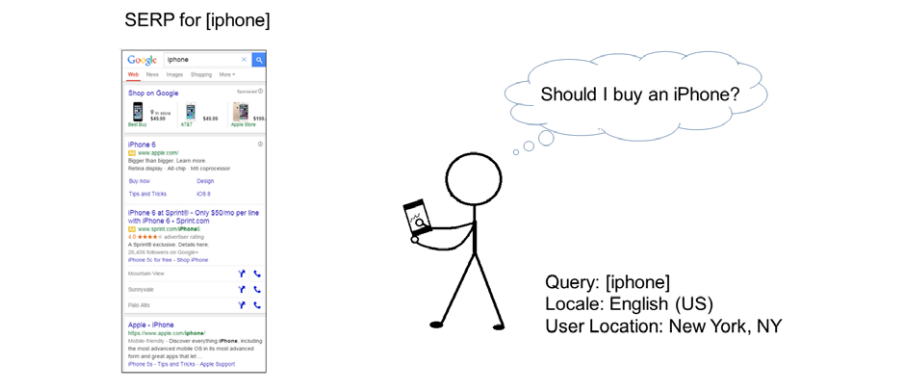How to Use Google’s Own Guidelines to Maximize Your SEO Efforts
There are two critical elements that form the foundation for any successful SEO initiative: high quality content and a user-friendly site. These concepts are not new, but some fairly recent changes at Google have reiterated the importance of these two components:
- In the last year and a half, Google has released several algorithm updates that focus on refining search results to prioritize quality, user-friendly results.
- In early October, Google announced that it intends to split its current index into two separate indexes—one for desktop search, and one for mobile search. The mobile search index will become the company’s primary index within the next few months.
Given that many sites have suffered as a result of the new algorithm updates, and considering the increased importance of mobile that a second index will ensure, it’s a good time to review Google’s Search Quality Rating Guidelines. These guidelines detail procedures used by the company’s quality raters to evaluate search results, and contain an almost behind-the-scenes look into how the search engine defines quality when determining search rankings of a site and its content.

Expertise, Authoritativeness, and Trustworthiness (E-A-T)
One of the largest tasks assigned to quality raters is determining the expertise, authoritativeness, and trustworthiness (E-A-T) of both a site and its content. To give search results an E-A-T ranking, raters evaluate both general site authority and the quality of specific content pages based on three factors: reputation, qualifications, and quality.
Factor 1: Reputation
In the same way that inbound links from authoritative sources boost SEO, positive feedback about a website and the organization that operates it—from reputable, external sources—are influential in determining the reputation of a website. Quality raters determine reputability by reviewing what external sources say about a site/business, as well as feedback from its users and patrons.
To demonstrate reputability:
- Make sure it’s clear what business, individual, or organization operates your website. “About” and “Contact” pages are essential.
- Earn positive citations from external sources by providing useful products, helpful and accurate information, and exceptional customer service.
Factor 2: Qualifications
Regardless of a site’s topic, the authors who contribute content to the site should be authorities in their fields. Life experiences and formal qualifications can both be used to determine an author’s qualifications as an authority, though some topics—health, financial, and parenting advice, for example—require contributors to meet higher standards.
To highlight qualifications:
- All content should be attributed to an author. Avoid attributing authorship to generic groups like “editorial team.”
- Author bylines should link to profile pages that list the specific qualifications that make site contributors authorities on site topics.
Factor 3: Quality
The quality of page content plays a huge part in determining E-A-T. Quality ratings consider how well the content fulfills the purpose of the page. Length of content is less important than comprehensiveness, and the highest quality content is dependent, in part, on an evaluation of the time, skill, and expertise that were put into creating the content.
While the main content of the page plays a large part in determining the quality of the page, supplementary content, user experience, and functionality are also considered.
To emphasize quality:
- Supplementary content should not distract from main content. Avoid ads and interstitial pages that obscure the main content of the page. If you utilize lightbox ads or popups, ensure that the close action is clearly visible.
- Do not try to deceive users with misleading ads or affiliate links that are designed to look like additional site content. Avoid clickbait headlines and images that link to irrelevant and/or disappointing supplementary content.
- Ensure your site is user-friendly and functional. Repair or redirect links that point to 404 errors, perform cross-browser and cross-device testing to ensure site functionality for all visitors, and consider having usability testing conducted on your site to identify navigational issues.
Needs Met Mobile Ratings
It’s rare that someone conducts lengthy research on a mobile device. Generally, mobile users are looking for specific information and need to do so within a limited timeframe. (Although this trend may be changing, given the rise of mobile-only users.) For this reason, Google’s quality raters perform an additional set of testing on mobile search results to determine how fully those results meet the needs of the search query.
To make this determination, quality raters must interpret the intent of the query.

From Google’s Search Quality Evaluator Guidelines
Is the user looking for a direct answer to a simple question, or is he looking for more detailed information? Is she trying to perform an action, visit a specific website, or make a purchase? Or is he looking for location-based information, trying to find a shop or restaurant nearby? Quality raters will ask these questions when rating how well a result meets user needs on mobile.
To improve your mobile search rankings:
- Optimize your site for mobile. Sites that require pinching and zooming, or that do not function properly on a mobile device, are flagged as “Hard to Use” and penalized in mobile rankings.
- Understand the intent behind keyword queries that drive organic traffic to your site. When performing a search, is the user trying to do something, know something, or go somewhere? If you fully understand the intent of the query, you’ll be able to create and adapt page content to meet searcher needs.
Quality and Experience Are Key
The clear and unsurprising takeaway from all 146 pages of Google’s Search Quality Rating Guidelines is that the most important thing you can do to succeed in search is provide accurate and comprehensive content that satisfies searcher needs and is easily accessible on every device. If you dedicate your SEO efforts to meeting that goal, you’ll have nothing to worry about in the future when algorithms continue to change and indexes split.
What's Next?
Profound Strategy is on a mission to help growth-minded marketers turn SEO back into a source of predictable, reliable, scalable business results.
Start winning in organic search and turn SEO into your most efficient marketing channel. Subscribe to updates and join the 6,000+ marketing executives and founders that are changing the way they do SEO:
And dig deeper with some of our best content, such as The CMO’s Guide to Modern SEO, Technical SEO: A Decision Maker’s Guide, and A Modern Framework for SEO Work that Matters.




